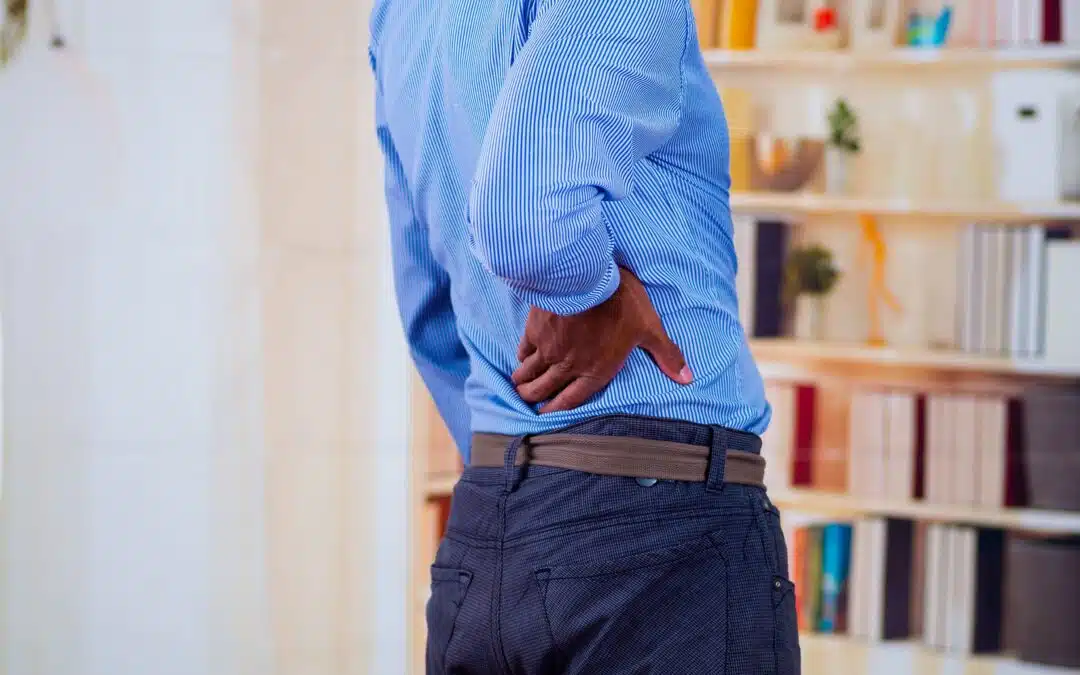I can’t feel my leg, and other unexpected lower back pain symptoms
In the first part of our lower back pain blog series, we discussed the myriad potential causes of lower back pain. In this article, we’ll discuss the symptoms, both obvious and unexpected, that come with lower back pain and issues.
And the first symptom is…
Lower back pain! (This was one of the obvious ones.) But, it’s not quite that simple! It’s important to assess the type of pain, the location, and the context around the pain to really pinpoint an accurate cause or diagnosis. So let’s dig deeper.
Quality of pain
Depending on the cause, your lower back pain could be a dull, lingering ache accompanied by muscle spasms that also radiates to your pelvis and hips, or it could be a sharp, stabbing or ‘zinging’ sensation that can double you over and take your breath away. It’s important to pay attention to the quality and type of lower back pain symptoms you’re having so you can accurately relay them to your care team.
Location of pain
As we mentioned, the dull ache tends to stay fairly localized in your lower trunk—from the curve of your lower back around to your hips and pelvis. It’s also very common to have lower back pain that travels. Specifically, pain associated with the sciatic nerve is known to travel down the leg, sometimes all the way into the toes. This pain can range from stinging and stabbing, to tingling and numbness. The specific location of your pain (back of thigh into calves, front of thigh, or in your hip joints) can help indicate the exact vertebrae that’s affected, making your diagnosis and recovery that much more efficient!
Context around pain
Is your pain worse after sitting for an extended period? Horrible when you wake up, but wanes as you move around through the day? An immediate or delayed side effect after an injury? Again, each of these scenarios can tell us something different about your pain. Long stretches of sitting that result in pain can indicate that your discs are compressing, and the padding between them might be wearing thin. If your pain lessens as you move around throughout the day or change positions, it could be due to decreased blood flow and stiffness as you stay in one position too long. Think about how long you’ve had your mattress for if this is the case—they aren’t made to last forever!
Obviously, injuries and trauma are likely to cause lower back pain symptoms, but again, pay attention to your body. Sudden jarring or impact can damage the spine, so immediate pain should be checked out. If your pain is delayed, you have less cause for concern as it’s generally considered to be muscle or soft tissue pain, and part of the natural recovery process. But still do talk to an expert if it lasts longer or feels more acute than you’re comfortable with.
When to see a doctor—the lower back pain symptoms that might need immediate attention
As we mentioned, if your back is hurting immediately after an accident, or hurting inordinately upon a delay after the accident, it’s worth seeing a specialist and explaining your situation. Additionally, if your back pain is accompanied by a fever or uncontrollable urination, you might have a kidney-related or other more complex issue that would benefit from immediate medical attention. Similarly, if you’re suffering from bowel incontinence or leg weakness resulting in sudden stumbling or trouble getting up from a chair, there may be more issues with your nerves that an ER evaluation can help you navigate. In general, if you’re experiencing any of the above issues, it’s worth a visit with a practitioner. Always err on the side of caution when it comes to your spinal cord!
What if my low back pain doesn’t go away?
iSpine Clinics is a great resource to turn to for non-emergency situations and if/when your back pain doesn’t recede after a few weeks. We have clinicians on staff who review, understand, and help pinpoint the cause of your lower back pain—a great first step is setting up an Interventional Pain Consultation. We’ll assess the quality and severity of your pain, learn more about your lifestyle, health history, and any major medical moments that might be impacting your issues, and recommend a plan of action, which may include a visit to our rehab team for physical therapy.
We hope you’re enjoying our series on lower back pain! We’ve already talked about causes and symptoms, but be on the lookout for more discussion on prognosis and treatment. We look forward to helping educate you on how to live free from pain.


